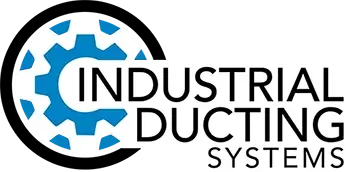Food & Beverage Manufacturing Ducting Solutions
Food and beverage manufacturing facilities face unique air quality challenges that directly impact both worker safety and product quality. These operations generate various airborne contaminants including flour dust, sugar dust, spice particles, cooking oils, and steam, all of which require specialized handling due to food safety regulations and combustible dust hazards.
The industry operates under strict sanitary requirements that influence every aspect of ventilation system design, from material selection to cleaning protocols. Many food processing operations involve high-temperature cooking, baking, or sterilization processes that create additional ventilation challenges. The trend toward automation and increased production volumes has intensified these air quality management requirements.
Seasonal production variations in many food processing facilities create unique challenges for ventilation systems, which must accommodate dramatic changes in production volume and emission characteristics. Additionally, the industry faces increasing scrutiny regarding worker exposure to food allergens and respiratory sensitizers.
Specific Air Quality Requirements & Regulations
Food and beverage manufacturers must comply with multiple regulatory frameworks. OSHA's combustible dust National Emphasis Program addresses the significant fire and explosion hazards associated with organic dusts common in food processing. Facilities handling combustible dusts must implement dust hazard analysis (DHA) and may require explosion prevention systems.
FDA regulations under the Food Safety Modernization Act (FSMA) establish comprehensive food safety requirements that directly impact ventilation system design and maintenance. Current Good Manufacturing Practice (cGMP) regulations (21 CFR 117) require that ventilation systems prevent contamination of food products while maintaining sanitary conditions.
USDA regulations apply to meat and poultry processing facilities, establishing specific requirements for air quality management in food contact areas. These regulations often require positive pressure in processing areas and sophisticated air filtration systems.
Temperature requirements vary significantly across food processing operations. Baking operations may require 400-500°F rated ductwork, while blast freezing operations operate at sub-zero temperatures. Steam-based processes create condensation challenges that have to be addressed in system design.
Construction Process & System Design Considerations
Food processing facilities require ventilation systems that balance air quality control with strict sanitary requirements. Construction must utilize food-grade materials that facilitate cleaning and sanitization. All surfaces must be smooth and non-porous to prevent bacterial growth and make it easy to clean.
The construction process must carefully coordinate with food safety requirements, often requiring temporary production shutdowns during installation to prevent contamination. Phased installation approaches are common to maintain production continuity while ensuring food safety standards are met.
Ductwork design must incorporate features that prevent condensation accumulation and provide adequate drainage. Positive pressure systems are often required in food contact areas, creating complex balancing requirements. Access panels and cleanout ports must be designed to maintain sanitary conditions while providing necessary maintenance access.
Explosion prevention measures may be required for combustible dust applications, including explosion vents, suppression systems, and isolation valves. These systems must be integrated into the overall facility design while maintaining sanitary requirements.
Technical Specifications & Performance Requirements
Food processing ventilation systems typically require moderate air volumes compared to heavy industrial applications, generally ranging from 10,000 to 200,000 CFM depending on facility size and processes. However, air quality requirements are often more stringent than industrial applications.
Material selection is critical for food processing applications. Stainless steel (316L) is preferred for direct food contact areas, while galvanized steel may be acceptable for general ventilation. All materials must comply with FDA food contact regulations and be capable of withstanding cleaning chemicals and procedures.
Filtration requirements often exceed industrial standards, with HEPA or ULPA filtration common for critical processing areas. Static pressure requirements typically range from 10-20 inches of water column, depending on filtration requirements and system complexity.
Corrosion resistance is essential due to wash-down procedures and exposure to cleaning chemicals. Drainage provisions must be incorporated to prevent standing water, and all joints must be sealed to prevent contamination. Vibration isolation is important to prevent product contamination from equipment-generated vibrations.
How Industrial Ducting Systems Delivers Solutions
Industrial Ducting Systems understands the unique challenges of food and beverage manufacturing, where air quality control must balance worker safety, product quality, and regulatory compliance. Our design expertise addresses the critical requirements of sanitary construction while providing effective ventilation performance.
Our 2D CAD design services provide detailed system layouts that integrate with your facility's food safety requirements and process equipment. We understand the importance of maintaining positive pressure in critical areas while preventing cross-contamination between different processing zones.
Our material expertise ensures proper selection of food-grade materials that comply with FDA regulations while providing long-term durability in wash-down environments. We provide comprehensive quantity take-offs that account for specialized sanitary construction requirements and corrosion-resistant materials.
Our logistics coordination addresses the unique scheduling challenges of food processing facilities, understanding that production shutdowns must be carefully planned to minimize product loss and maintain delivery schedules. We provide installation approaches that protect your products from contamination while ensuring effective ventilation performance.
Experience the Industrial Ducting Systems Advantage
Sanitary construction, FDA-compliant materials, contamination prevention—discover why food processors trust us with their most critical air quality and safety requirements. Let's design a system that exceeds your expectations.
